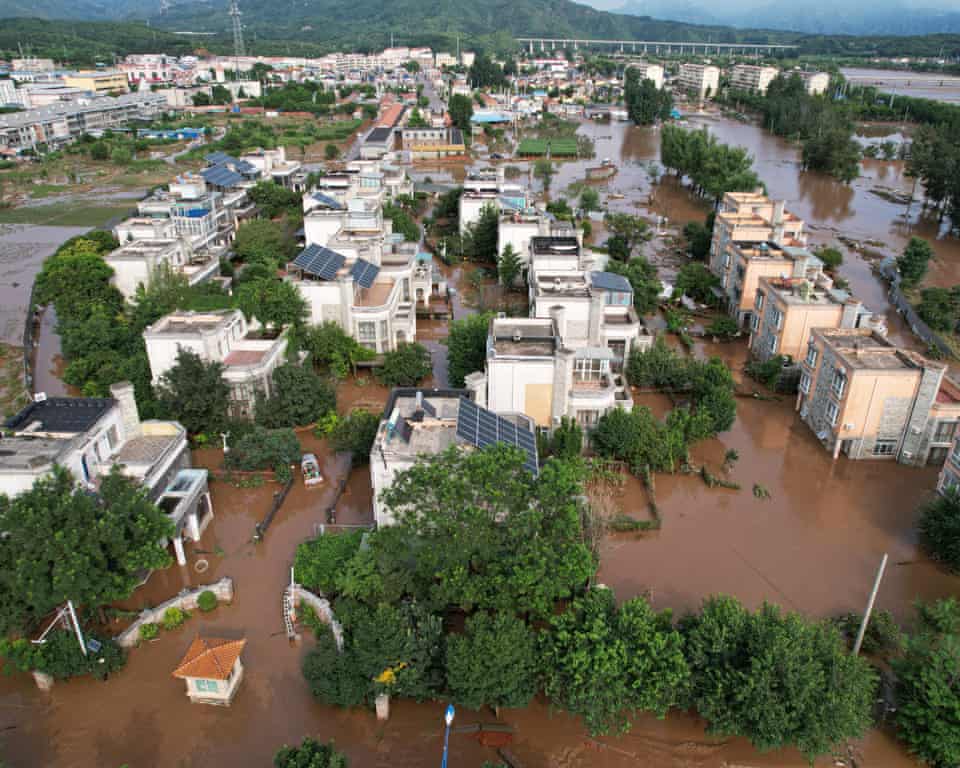More than 30 people have died and tens of thousands have been displaced following days of relentless rainfall and severe flooding in Beijing and its neighbouring regions, according to Chinese state media.
State broadcaster CCTV reported that 28 people were confirmed dead in the Miyun district on the city’s northern outskirts, with an additional two fatalities in Yanqing district as of midnight on Monday. Both districts lie far from central Beijing but were among the worst-hit areas during the downpour.
In neighbouring Hebei province, a landslide on Monday killed four individuals, while eight others remain missing. Torrential rain began over the weekend and intensified throughout Monday, causing widespread destruction across northern China.
According to the official Xinhua news agency, Beijing recorded rainfall of up to 543.4mm in its northern districts. The downpour forced the relocation of 80,322 residents from flood-prone areas. Roads were washed out, communication infrastructure was damaged, and 136 villages were left without electricity by Monday night.
Chinese President Xi Jinping ordered an “all-out” search and rescue operation, calling for efforts to minimise further casualties. Premier Li Qiang confirmed that there had been “significant casualties” in Miyun.
Beijing authorities raised the city’s rain and flood alerts to their highest level on Monday, urging residents to remain indoors. The capital also activated a top-level emergency response, suspending schools, halting construction projects, and cancelling outdoor tourism activities.
In response to the rising water levels, authorities released water from the Miyun reservoir, which had reached its highest point since construction was completed in 1959. More than 730 million cubic metres of water had flowed into the reservoir by Tuesday morning, prompting officials to warn residents to avoid downstream rivers as further rainfall was forecast.
In Miyun, floodwaters overturned cars and downed power poles. In Taishitun, a town roughly 100km northeast of central Beijing, flood damage left the streets coated in thick mud and uprooted trees piled along roadsides.
“The flood came rushing in, just like that, so fast and suddenly,” said Zhuang Zhelin, a local shopkeeper clearing mud with his family. “In no time at all, the place was filling up.”
The heaviest rainfall was expected in the early hours of Tuesday, with up to 30cm forecast in some areas.
The disaster echoes the deadly floods of 2023, which also devastated Beijing and Hebei, killing dozens and displacing nearly one million people. At the time, the government faced backlash for allegedly directing floodwaters away from the capital, leading to increased destruction in surrounding provinces.
In a statement, the central government announced an emergency fund of 50 million yuan (approximately £5.5 million) to support recovery efforts in Hebei and said a high-level emergency response team had been dispatched to the region.
Experts warn that human-driven climate change is intensifying extreme weather events globally, fuelling more frequent and more deadly natural disasters. Scientists say many of the most catastrophic weather incidents in recent years, ranging from heatwaves to wildfires and floods, would have been virtually impossible without the influence of global warming.



